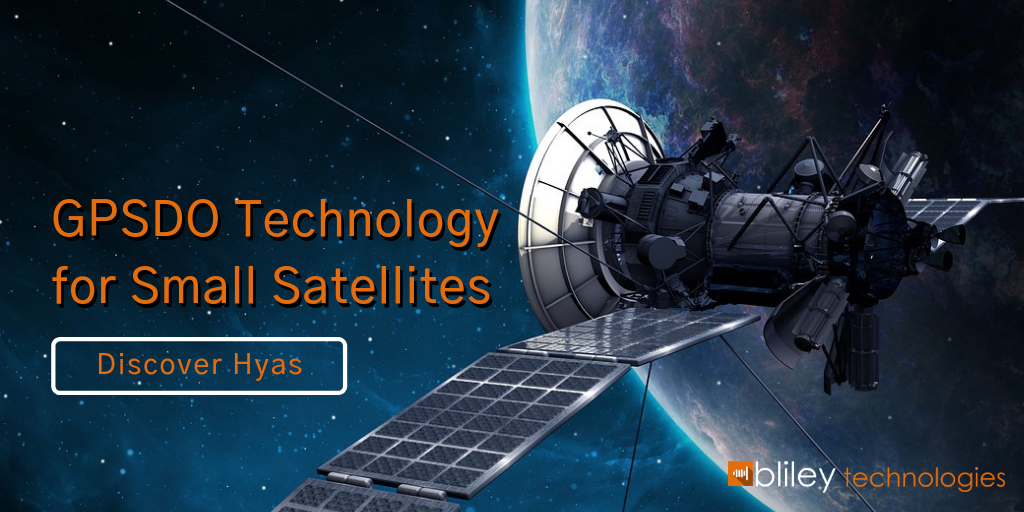
We've seen some confusion over which timing device works best in satellite communication applications. Should you use a standard oscillator (OCXO), a GPS disciplined oscillator (GPSDO), or an atomic clock in your satellite?
The short answer is, "it depends." You'll need to choose your timing device based on on your specific needs, limitations, and operational orbit. Let's take a look at each operational orbit (LEO, MEO, and GEO) and which types of timing devices their satellites require.
Low Earth Orbit (LEO) Satellites
LEO satellites operate at an altitude of 2,000 km or less. This close proximity to Earth's atmosphere results in a shorter operational life and lower cost requirement compared to satellites that operate at higher altitudes.
One important advantage of LEO satellites is that they can receive precision timing from Global Navigation Satellite System (GNSS) satellites. Since Global Positioning System (GPS) signals come from medium Earth orbit (MEO) satellites, GPSDOs are a more popular precision timing solution than traditional atomic clocks.
While some atomic clocks provide great low-power and stability benefits, there's a common misconception in the LEO satellite industry that an atomic clock's precision timing always justifies its higher size, weight, power, and cost (SWaP-C). GPSDOs offer reduced SWaP-C compared to traditional atomic clocks, making them a more cost-effective solution for LEO satellites.
Alternatively, high stability low power OCXOs can also provide excellent phase noise for low cost precision time and frequency.
Related: GPSDOs for CubeSats & Other SmallSats: GPS Disciplined Oscillator Design & Architecture
Medium Earth Orbit (MEO) Satellites
MEO satellites operate at an altitude between 2,000 km and 35,786 km. This is the region of space that GNSS satellites occupy. MEO satellites have a longer design life than LEO satellites but do not require the highly engineered designs required for GEO space.
A precision atomic clock (like the AR133 series rubidium atomic clock) timing source, coupled with an ultra-stable oscillator (using the legacy BG61/BQOTY crystal), is required at this orbit.
Related: The Ultimate Guide to Atomic Clocks in Space
Geostationary Orbit (GEO) Satellites
GEO satellites operate at an altitude of 35,786 km. This high altitude requires larger launch vehicles and longer design life than LEO or MEO satellites. The high altitude also makes GPS signals unavailable.
A precision atomic clock (like the AR133 series rubidium atomic clock) timing source, coupled with an ultra-stable oscillator (using the legacy BG61/BQOTY crystal), is required at this orbit.
Related: Ultra-Stable Oscillators & 5 Elements That Affect Frequency Stability
Do You Need Bliley on Board?
Bliley Technologies has developed GPSDO technology specifically for LEO satellite applications. They use swept quartz and are designed to withstand the radiation environments found in LEO space. Hyas is a versatile option that works well in a variety of applications, such as tracking, communication, and earth observation.
Explore our full line of space oscillators >>






